Solace and Pleasure in Winemaking
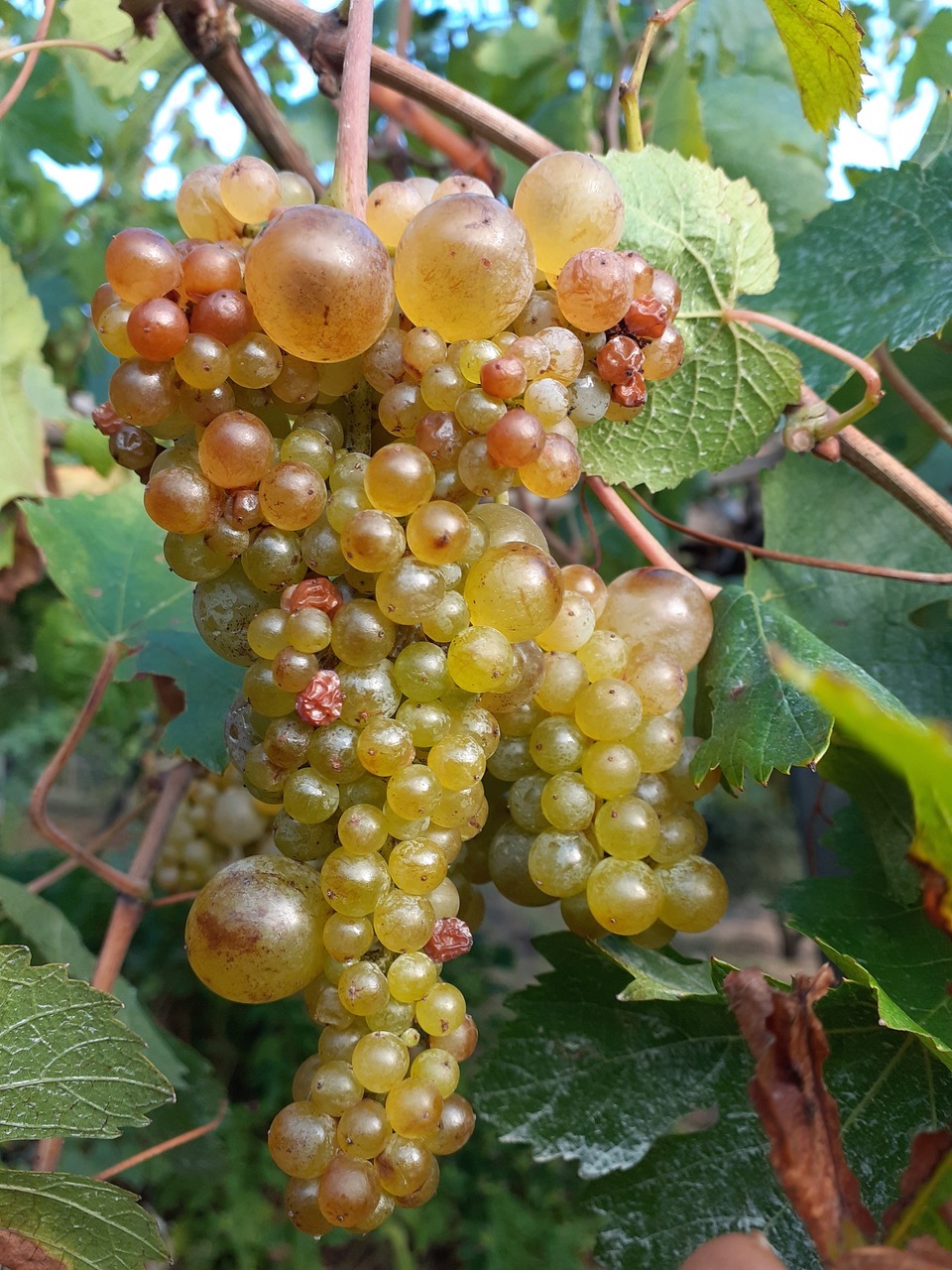
While the world is upside-down with COVID, Italian nature is just as spectacular as ever. This year, natural seasonal events, like olive harvesting or wine making, seem more meaningful still; connecting us with the natural world and reaffirming the role of tradition in the Italian agricultural cycle.
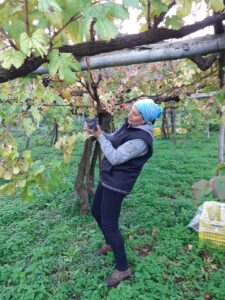
A vineyard I love, and which many of you have visited in your Insider’s Italy travels (bookmark for 2021 !) is Monte di Grazia, a family owned estate outside Tramonti, just up the valley from the Amalfi Coast, sited in the Lattari Mountains.
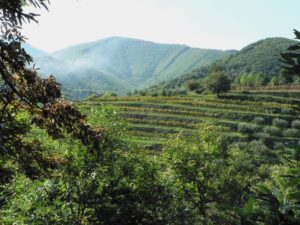
It feels cut off from the world, though tourists (but never Insider’s Italy travelers !) are crowded on beaches just half an hour away.
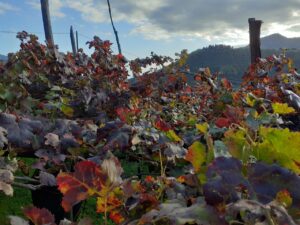
Soil is volcanic, the location well ventilated, and the microclimate, at an average of 670 meters (2200 feet), is ideal for production. The vineyards are in locations close one to the other, and are notable for having had no disruption by phylloxera (in the late 19th century the phylloxera epidemic destroyed most of the vineyards for wine grapes in Europe.)
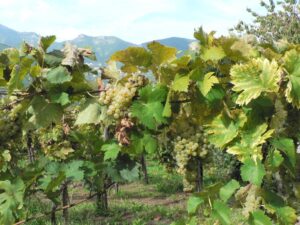
Many vines are over 100 years old, with some approaching 300 years. Trunks are of unreal dimensions : to visit Monte di Grazia is very much an emozione.
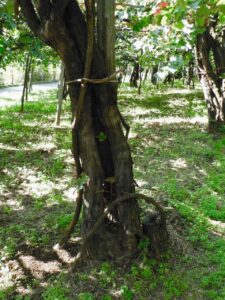
Monte di Grazia uses the Etruscan-Roman method to cultivate vines. Hand hued enormous chestnut poles, aged for at least one year, are the plants’ support, and willow branches, cut and cleaned, are used to attach the plant’s branches and cordons to the poles.
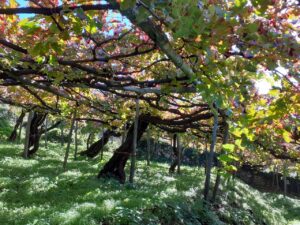
Tending vineyards that are so trellised requires intense attention.
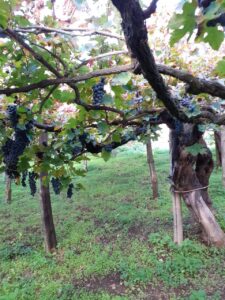
Another ancient technique used at Monte di Grazia is propaggine, in which a vine is tilted into a hole, burying it for a short distance, making its end emerge from the ground with at least one bud from which the shoots will be born. Thus a new plant takes root.
This was a good year, despite 20 days of rain in early June, causing mildew in some vineyards, meaning fruit loss and a drop in production, especially for red grapes.
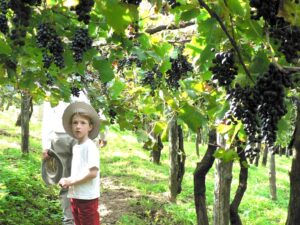
Added to this was a prolonged summer drought which caused unevenness in the ripening of the grapes. Although Monte di Grazia is in the south, theirs’ is always a late harvest and rarely starts before the beginning of October. This year, picking the white grapes began on October 5 and concluded on October 18, with red grapes gathered from October 19 to 22.
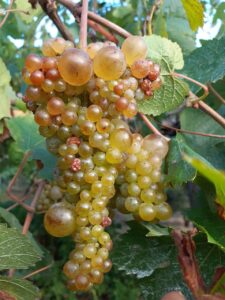
But picking of Piedirosso grapes from the very oldest vineyard, Madonna del Carmine, concluded on October 31.
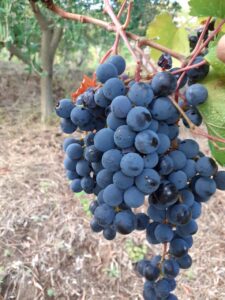
Fermentation is with wild yeasts because the estate believes deeply that the wines must express the place and the year.
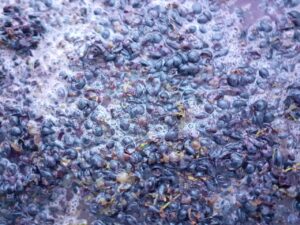
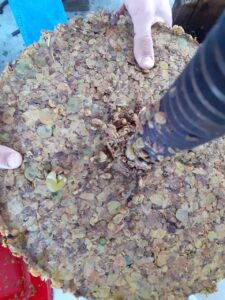
Alfonso Arpino, a physician from the town, is the owner of Monte di Grazia.
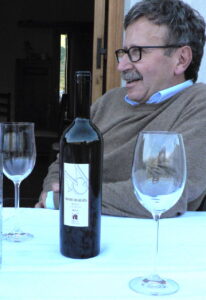
At a time when farmers and landowners were abandoning their land, Alfonso went against the trend and bought vineyards—not because of any previous farming experience but out of love and respect for the old vines.
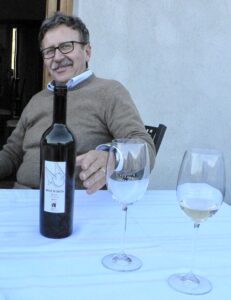
These purchases, added to his own family’s small vineyard holdings, brought his total vineyard area to close to seven acres (27,000 square maters).
Monte di Grazia vineyards are certified organic. Red varieties are only local : Tintore di Tramonti, Piedirosso, Moscio, Sciascinoso, Olivella; local white varieties are Pepella, Biancatenera, and Ginestra. As you enjoy Monte di Grazia wines sourced from Tintore, and study the intense and dark color clearly visible in the glass, taste the intense tannins and marked acidity, and try several vintages where tannin and acidity have balanced and made for lively, earthy, fruity, exciting wines, think to yourself, as you pour a second glass : “when did I last drink a wine from a vine that is over 100 years old ?”
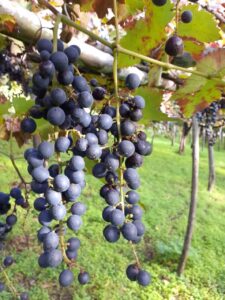
The wines are in North America imported by https://www.bowlerwine.com/


Meet Marjorie
Insider’s Italy is an experienced family business that draws on my family’s four generations of life in Italy. I personally plan your travels. It is my great joy to share with you my family’s hundred-year-plus archive of Italian delights, discoveries and special friends.
